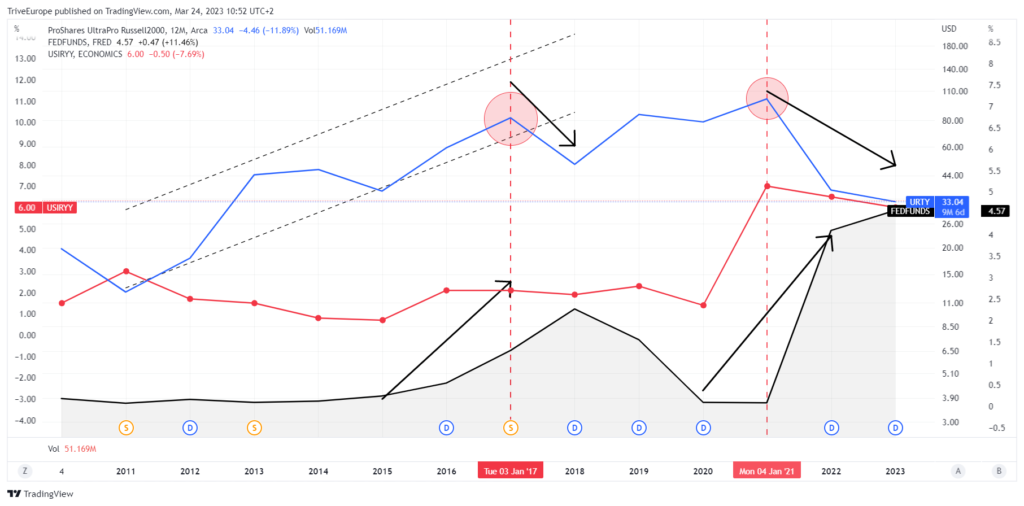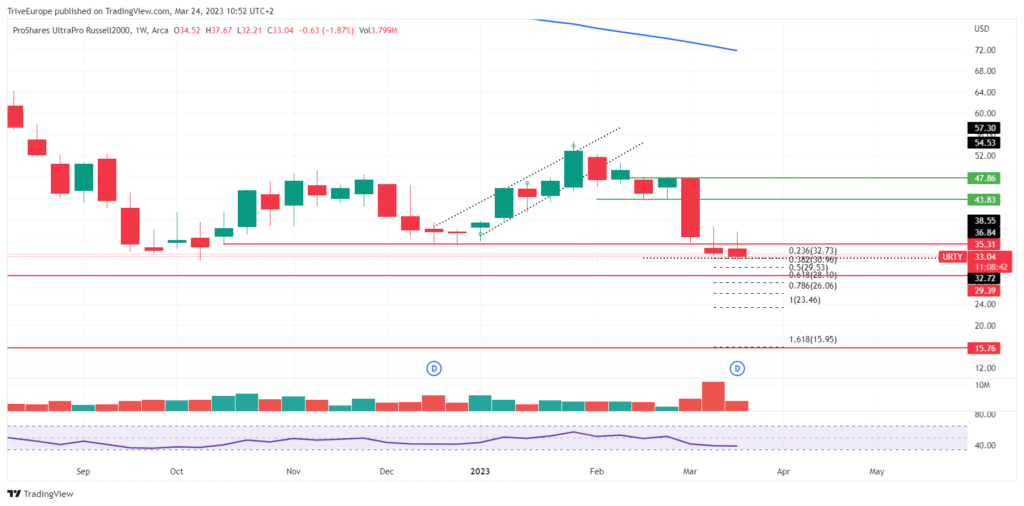High inflation generally leaves a bad taste in economists’ mouths. It comes with a bucketload of issues for various stakeholders of the economy grappled by it.
The Proshares UltraPro Russell2000 (NYSE ARCA: URTY), which tracks the performance of small-cap U.S equities, has seen its fair share of struggles in high inflationary periods. High inflation not only affects consumer spending, adversely affecting the top line of consumer-facing businesses, but it also prompts interest rate hikes which add stress to cash flows as borrowing costs surge.
Below is a graphic illustration of the performance of the URTY in the year-on-year inflation and interest rate environment. Over the period between 2011 and 2015, inflation was on the downtrend, with interest rates relatively flat. This period saw the URTY surge 193% as the environment was business-friendly, allowing small-cap companies to fund expansion on low borrowing costs.
Inflation did, however, respond to the growth of business activity, leading to a slight surge in inflation and a hike in interest rates. In 2017, the URTY dipped in the face of a more hawkish environment, leading to a 39.77% decline. A similar dip occurred but with more significant momentum after inflation spiked between 2020 and 2021. The Federal Reserve responded by hiking rates at the fastest pace in its history, with the Fed Funds rising from 0.1% to 4.10% in a year. The steep rate hikes led to the 62.60% plunge in the URTY over the year.

Technical
The URTY is trending lower, with price action well below the 100-day moving average. Bearish momentum dominates the market as the fundamental environment (high inflation; high-interest rates) fuels the downward pressures.
Following a high volume breakout below the $35.31 support level, downside momentum will likely stay the course. In the past, significant support levels formed at the Fibonacci Extension Golden Ratios of 61.80% and 161.8%, or the $28.10 and $15.95 levels, respectively. If the price approaches either level on declining volumes, it could signal the weakening of bearish pressure. Bullish investors will likely be enticed to buy into the ETF at either one of the levels.

Summary
With U.S. inflation and interest rates at their highest in over ten years, the URTY will likely be weighed down until the first pivot by the Federal Reserve. Between 2018 and 2019, the URTY saw positive performance following the Federal Reserve cutting rates during the year. The URTY will likely continue to be weighed down for the short to medium term until rates are cut.
Sources: Federal Reserve, Reuters, Nyse Arca, TradingView

